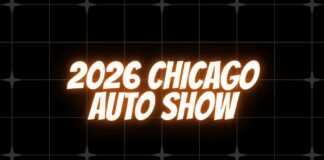When you think of Honda, images of reliable front-wheel-drive economy cars might come to mind. But beneath the surface of practicality lies one of Honda’s most iconic creations: the S2000. This high-revving roadster is not only a fan favorite but also one of the best sports cars ever built. Today, we’re looking into the legacy of the S2000—why Honda developed it, why it was discontinued, and which model reigns supreme: the AP1 or the AP2.
The AP1 Honda S2000

The S2000 AP1 debuted in Japan in 1999 and hit U.S. shores in 2000. Its recipe for success? A front-engine, rear-wheel-drive layout paired with the legendary F20C engine. This 2.0-liter, naturally aspirated inline-four churned out 240 horsepower and revved all the way to an astonishing 9,000 RPM.
The AP1 was designed to deliver a raw, thrilling driving experience, giving drivers confidence behind the wheel. Its heavy steering and sharp handling make it a car that feels alive, even by modern standards.
The S2000’s Roots: Honda’s S-Series
The S2000 wasn’t Honda’s first foray into roadsters. In the 1960s, Honda entered the car market with the S500, a tiny roadster inspired by the company’s motorcycle heritage. The S500 and its successors, the S600 and S800, were known for their high-revving engines, dual overhead cams, and lightweight chassis.
Although the original S-Series ended in 1970 as Honda shifted focus to family-friendly vehicles, the S500’s DNA planted the seeds for a future sports car. That car would be the S2000, a spiritual successor designed to celebrate Honda’s engineering excellence.
Racing Expertise Meets Innovation
In the 1980s and ’90s, Honda cemented itself as an engineering powerhouse. Dominating Formula 1 with six consecutive Constructors’ Championships from 1986 to 1991, Honda honed its skills in building high-performance engines. Around the same time, Honda introduced VTEC, a revolutionary system that allowed engines to balance efficiency at low RPMs with power at high RPMs.
These advancements laid the foundation for Honda’s new halo car. Building on the success of the NSX supercar, Honda sought to create something more accessible for the average buyer—a roadster that could rival the Mazda Miata and other upcoming competitors.
From Concept to Reality
In 1995, Honda unveiled the Sports Study Model (SSM) concept at the Tokyo Motor Show. This prototype featured cutting-edge technology, including an aluminum double-wishbone suspension and an inline-five engine. The public response was overwhelmingly positive, prompting Honda to green-light the project.
Over the next few years, Honda tested and refined the car, clocking over 18,000 miles at the Nürburgring and Swiss mountain roads. The inline-five engine was replaced with the F20C inline-four, which was mounted behind the front axle for a perfect 50:50 weight distribution. To improve rigidity—often a challenge for roadsters—Honda developed the “X-bone” frame, centralizing strength in the car’s structure.
Finally, in 1999, Honda unveiled the S2000, named to honor its S-Series predecessors and mark Honda’s 50th anniversary.
Enter the AP2: Refinement Over Rawness

In 2004, Honda introduced the AP2, a mid-cycle refresh for the S2000. This version addressed some of the AP1’s quirks, such as bump steer, by retuning the suspension. The most significant change came under the hood with the introduction of the F22C1 engine.
The new 2.2-liter engine provided more low- and mid-range torque, addressing criticisms that the F20C needed to be revved hard to deliver power. However, this came at the cost of a lower redline—8,200 RPM compared to the AP1’s 9,000 RPM. While some enthusiasts mourned the loss of the high-revving character, others appreciated the added usability and refinement.
Special editions like the CR (Club Racer) further enhanced the S2000’s legacy. With stiffer suspension, unique aero components, and a lightweight interior, the CR was a track-focused version of the AP2 that remains highly sought after today.
AP1 vs. AP2: The Great Debate
The AP1 and AP2 each have their loyal fanbases, and for good reason. The AP1’s high-revving engine and raw handling appeal to purists, while the AP2’s refinements make it a more polished and accessible sports car. After driving both, it’s clear that Honda’s engineers continually improved the S2000, creating a car that’s greater than the sum of its parts.
The End of an Era
Despite its brilliance, the S2000 struggled with sales. In 2008, Honda sold just 3,500 units, compared to over 350,000 Civics the same year. With the global financial crisis and changing market trends, Honda discontinued the S2000 in 2009, just 10 years after its debut.
Could the S2000 Return?
Automotive revivals are all the rage, with cars like the Toyota Supra, Nissan Z, and even the Hummer making comebacks. Could the S2000 follow suit?
While it’s possible, the automotive landscape has changed significantly. Modern sports cars are increasingly adopting turbocharged and hybrid powertrains, and the days of high-revving, naturally aspirated engines are fading. If Honda brings back the S2000, it’s unlikely to recapture the purity of the original.
Final Thoughts
The Honda S2000 remains a shining example of Honda’s engineering prowess. Whether you prefer the rawness of the AP1 or the refinement of the AP2, this car is a testament to Honda’s ability to create something truly special.
So, if you ever get the chance to drive one, don’t hesitate. The S2000 isn’t just a car—it’s a legacy, and one that deserves to be celebrated.


